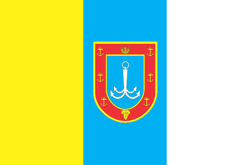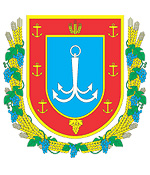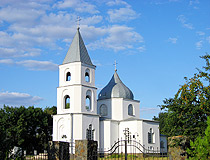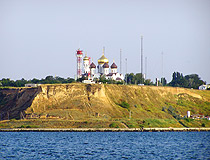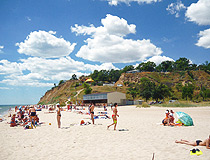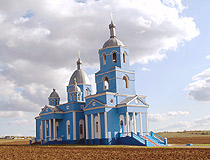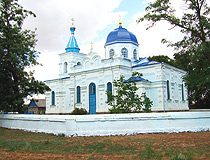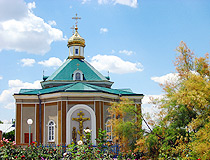Odesa Oblast - Overview
Odesa Oblast or Odeska Oblast is an administrative region located in the south-west of Ukraine. In the southwest it is washed by the waters of the Black Sea, in the south it borders with Romania, in the west - with Moldova. Odesa (also known as Odessa) is the capital city of the region.
The population of Odesa Oblast (2021) is about 2,351,000 (5.71% of the total population of Ukraine).
The area of Odesa Oblast is 33,314 sq. km. (5.52% of the total area of Ukraine, the largest region of Ukraine).
History of Odesa Oblast
Since ancient times, the history of the Odesa region unfolded mainly on the shore of the warm and almost always relatively calm Black Sea, its estuaries, bays, and rivers flowing into it. Fertile land and favorable climate, the ability to move quickly and trade profitably - all this attracted people of different tribes starting from the Late Paleolithic (about 35-12 thousand years ago).
At the end of the 3rd millennium BC, the territory of the Black Sea coast between the mouths of the Bug and the Danube rivers was inhabited by settled cattle-breeding and agricultural tribes. Then there were several successive waves of active settlement of the territory of the present Odesa region.
In the 8th-7th centuries BC, the Cimmerians came here. In the 7th-2nd centuries BC, they were replaced by the Scythians, in the 2nd century BC-the 2nd century AD - by the Sarmatians. The first Greek colonies appeared here in the 4th century BC. The spontaneous settlement of the southern part of the present Odesa region continued mainly due to conquests.
In the 1st-3rd centuries AD, the Romans were the conquerors, in the 3rd century - the Goths, in the 4th century - the Huns. In the era of Kievan Rus, the 9th-13th centuries, the Slavs settled here. In the 13th century, there were new conquerors - the Pechenegs and the Polovtsy. Since the 1240s, this territory came under the control of the Mongols.
More historical facts…
From the 13th century to the first half of the 15th century, the lands of the Odesa Black Sea region and the steppes are referred to as the Wild Field - ravaged and abandoned after the Mongol conquest.
At the end of the 13th century, on the ruins of the ancient Greek city of Tyras, the town of Akkerman (Bilhorod-Dnistrovskyi) emerged, which became an important trading center of the North-Western Black Sea region.
At the beginning of the 15th century, the Grand Duchy of Lithuania captured this region. In the 1480s, these territories came under the control of the Ottoman Empire. The Crimean Khanate controlled the territory between the Dniester and the Southern Bug. In 1475, the Crimean Khanate became a vassal of the Ottoman Empire. Since then, for almost three centuries, the Northern Black Sea region became a springboard for the Turkish-Tatar attacks on the lands located to the north.
In the middle of the 18th century, the northern part of the present Odesa region began to be gradually settled by migrants (mainly runaway peasants) from the Commonwealth, the Russian Empire, and Moldova. After three Russian-Turkish wars (1768-1774, 1787-1791,1806-1812), the Russian Empire gained control of this region. In 1856, following the unsuccessful Crimean War, southern Bessarabia with the town of Ismail became part of the Principality of Moldavia. Russia returned this land in 1878.
In 1789, a Spanish nobleman in Russian service, Major General Joseph (Osip Mikhailovich) Deribas (1751-1800), began to plan the construction of a Russian town and port on the site of the Turkish fortification of Khadjibey. In 1794, on the basis of a project compiled by him together with Francois-Paul Sainte de Wollant, Catherine II signed a rescript on the construction of Odessa named after the ancient Greek colony of Odessos.
In the first half of the 19th century, Odessa was already considered the third largest city of the Russian Empire after St. Petersburg and Moscow and the most important trading port specializing mainly in the wheat export.
Peasants from the northern provinces were resettled into the vast conquered expanses of the former Wild Field, preferential conditions (exemption from military service, taxes, etc.) were created for the resettlement of foreigners. Numerous Bulgarian, Gagauz and German colonies appeared here.
A new impetus in the development of the region was the peasant reform of 1861. An important factor, which contributed to the economic development of the region was the construction of railways, primarily Kiev - Vinnitsa - Balta - Odessa (1870). This significantly improved the transport and geographical position of Odessa, the presence of different types of agricultural raw materials gave impetus to the development of the processing industry of the city.
In 1918-1920, the territory of present Odesa Oblast became the arena of the Russian Civil War battles. Its southwestern part was occupied by Romania (1918) and was part of it until 1940. Odessa Oblast as part of the Ukrainian SSR was formed on February 27, 1932. During the Second World War, the Odessa region was occupied by Romania (October 1941 - August 26, 1944). During the war, 733 out of 990 industrial enterprises of the region were partially or completely destroyed.
In the post-war years, Odessa became a large base of the fishing fleet. New industries emerged in the Odessa region - automotive, oil refining, chemical. In the 1960s, agriculture became one of the most important sectors of the economy of the region. About 45.0% of the oblast population was employed in it.
Since August 24, 1991, Odesa Oblast has been a part of independent Ukraine.
Beautiful nature of Odesa Oblast
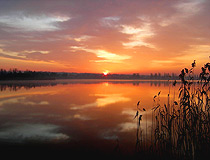
Sunset in the Odesa region
Author: M.Sergeev
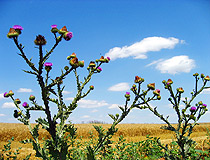
Summer in Odesa Oblast
Author: Maksym A. Rankevits
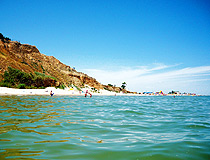
On the seashore in the Odesa region
Author: Sergey Redko
Odesa Oblast - Features
Most of the territory of the Odesa region belongs to the Black Sea Lowland. The length of the sea coast is about 300 km. The climate is humid, moderately continental. It combines the features of continental and marine climates. Winter is mild with little snow. The average temperature in January is about minus 2 degrees Celsius. Summer is mostly hot, dry. The average temperature in July is about plus 25 degrees Celsius.
The main natural wealth of Odesa Oblast is its land resources, which are mainly represented by chernozem soils with high natural fertility. In combination with a warm steppe climate, they form a high agro-industrial potential of this region.
In total, there are over 25,000 square kilometers of agricultural land in the region, including more than 20,000 sq. km. of arable land, more than 800 sq. km. of vineyards and orchards. Almost 10% of the cultivated land is irrigated. The warm sea, healing mud, mineral waters, sea beaches create an exceptionally high recreational potential of Odesa Oblast.
Odesa Oblast is also a highly developed industrial region, which plays a significant role in the structure of the economy of Ukraine. The region has over 400 large and medium-sized industrial enterprises of different industries: mechanical engineering, metallurgical production, chemical and petrochemical industries, light industry.
This region is the main marine foreign trade center of Ukraine performing important transport and distribution functions at the national and international levels. It is the leading region of Ukraine in terms of the development of the maritime industry and industries related to the use of sea and global ocean resources.
Tourism in the Odesa Region
The geographical position of the Odesa region, favorable climatic conditions, various natural healing resources, sandy beaches, a developed network of water, rail and automobile ways determine its development in the field of tourism and recreation.
In total, there are more than 5,000 objects of cultural heritage and 120 objects of the nature reserve fund of national and local significance. There are 92 nature reserves, including the Danube Biosphere Reserve, the Tiligul Regional Landscape Park, the Botanical Garden of Odesa National University named after I.I. Mechnikov, 19 parks-monuments of landscape gardening art, etc.
Odesa Oblast is known for a large number of sights of different times. These are the Odesa State Academic Opera and Ballet Theater, the famous Potemkin Stairs, the Odesa Catacombs, the Ukrainian Venice - the town of Vylkove, the 12th-15th centuries fortress in Bilhorod-Dnistrovskyi, excavations of the ancient Greek cities of Tyras and Nikonion, monuments of religious architecture in the cities of Odesa, Izmail, Reni, Kiliya.
On the territory of this region, there are a lot of preserved Orthodox, Muslim, Catholic, Jewish, and other religious buildings of the 13th-20th centuries. Here you can also admire unique defense (the 13th-15th centuries) and palace (the 19th century) architectural complexes. A number of architectural monuments of civilian use (mansions, administrative buildings, buildings of educational and medical institutions) have survived to this day, as well as military and civil monuments of the 19th-20th centuries.
By the variety of resort resources, the Odesa region occupied one of the leading places in the Russian Empire and the USSR. The favorable climatic conditions of the coastal zone, extensive beaches and the warm sea made it possible to create good climatic resorts here. The healing properties of sea air on the coast are determined by its saturation with chlorine, bromine, iodine salts, as well as breeze circulation.
The climate is used as the main therapeutic factor (in the form of air and sun baths, night sleep on the seashore, and other procedures) in the resorts of Arcadia, Bolshoy Fontan, Karolino-Bugaz-Zatoka, Lermontovsky, Luzanovka, Chernomorka. In Odesa, there is a research institute of balneology of the Ministry of Health of Ukraine.
Patients with chronic diseases of the organs of motion and support, the nervous system, gynecological diseases, diseases of the respiratory system (non-tuberculous), etc. are treated in the Odesa region resorts.


